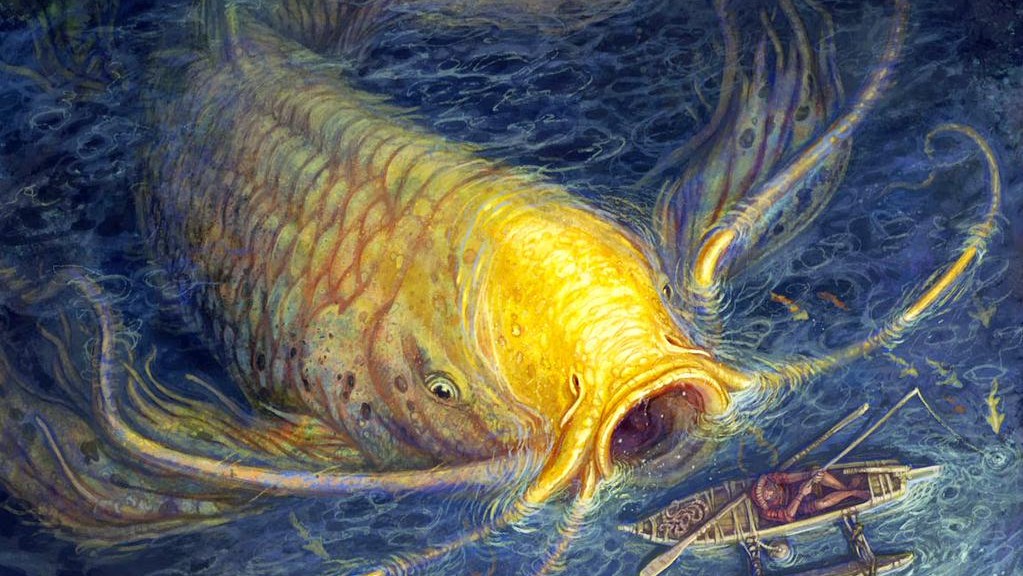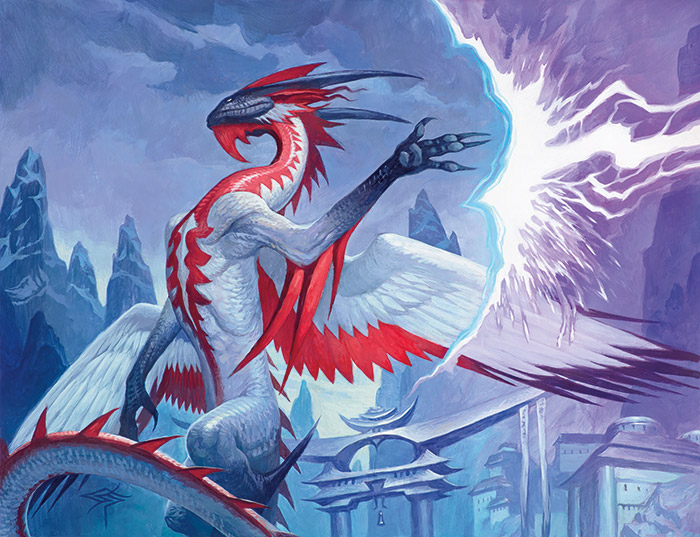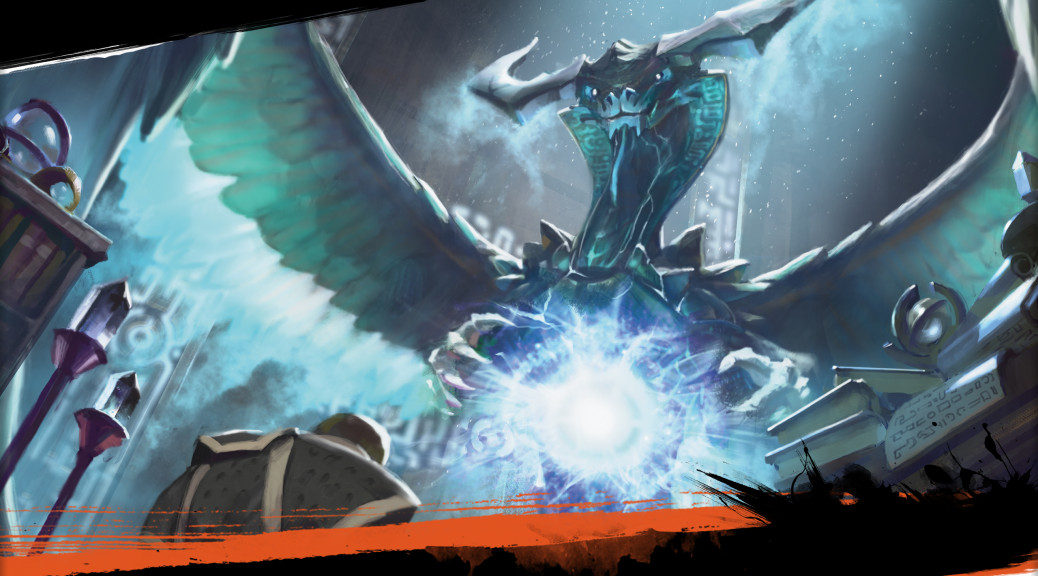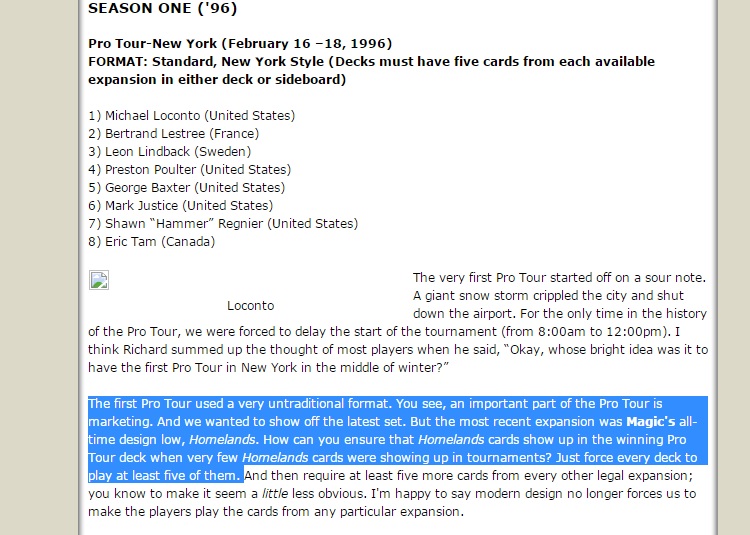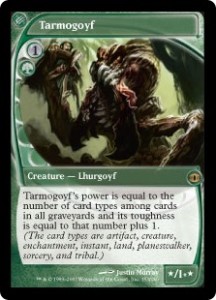By: Sigmund Ausfresser
Hello everyone, and welcome to my new home. After over three years of writing for other MTG Finance websites, I’m delighted to reach a broader audience here at MTGPrice.com. The opportunity is truly energizing, and I look forward to engaging dialogues each and every week. To that end, I encourage you to please share your thoughts – both positive and negative – in the comments section whenever you’d like.
Before I jump into my financial content for today, I wanted to first share a brief overview of my background. This context will really foreshadow many of my future topics, underlining my general approach to MTG Finance. Allow me to explain.
Background and Motivation
Technically, I’ve been playing Magic for about 18 years now…well, if you consider casting numerous Craw Wurms and Dark Banishings “Magic”. For over a decade I was solely a casual player; never understanding the allure of tournaments or adhering to certain rules dictated by various formats. Finally around Time Spiral block I dipped my toe into the competitive waters. I couldn’t understand why a card like Strangling Soot was so good, and why my first picking of Pardic Dragon wasn’t winning me games. It was the rare, after all!
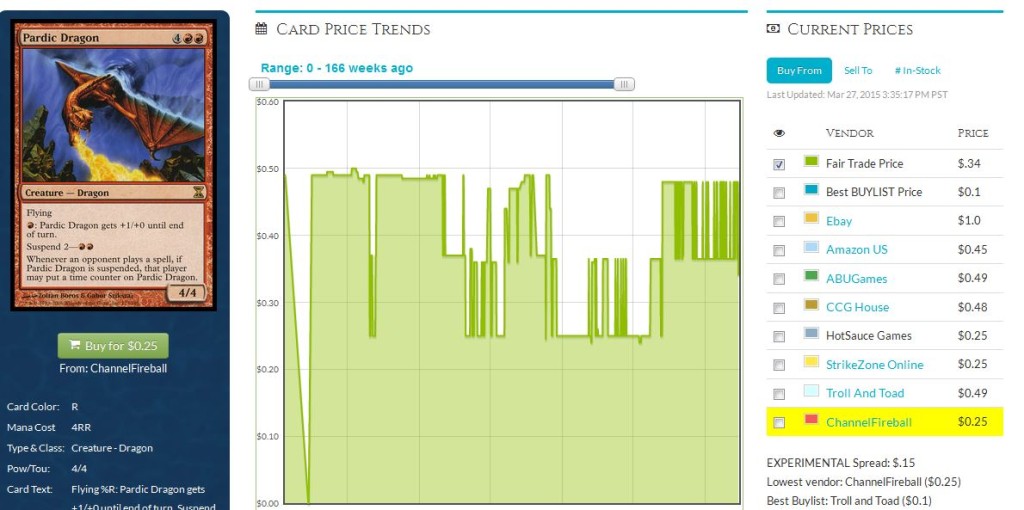
My defeats were swift and merciless. Clearly, there was much to learn.
A couple years later I was introduced to the concept of MTG Finance at my local card shop by a couple of influential members of the community. I distinctly remember asking the question that changed my perceptions of MTG Finance forever.
Me: “How did you get all of these valuable cards? Do you just open a lot of packs?”
Him: “Through trades.”
My paradigm of Magic was changed forever. I had finally realized the power of knowing not only the value of my cards but the value of others’ cards as well. I also discovered that cards had wildly fluctuating prices, which lent themselves to opportunistic exchanges and investments. Needless to say, I was immediately hooked. My soul purpose for attending local events suddenly became about trading, not battling. The methodology was easy to pick up, I signed up for a Twitter account to follow other MTG Finance experts, and the rest is history.
What’s left out of the story above, however, is my primary motivation. At first my goal was simply to avoid losing/spending money to play Magic. I learned a very difficult lesson after Psionic Blast went from $25 to under $5 after Time Spiral block rotated out of Standard. I had no idea rotation was a thing, and I certainly regretted giving up so much value for the under-appreciated Blue instant.
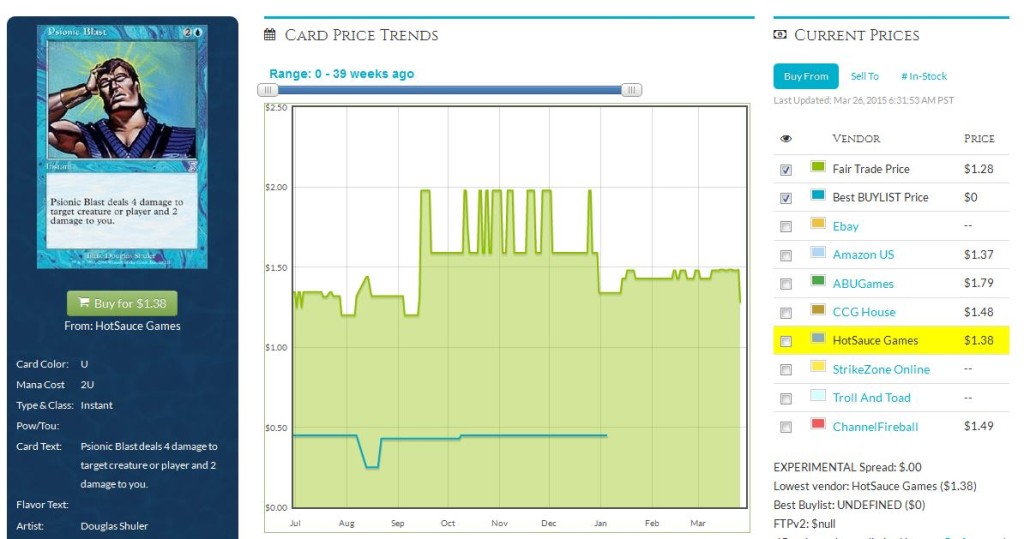
After these unfortunate trades, I swore I would pay much closer attention to financial trends. Fool me once, shame on you. Fool me twice, shame on me.
Through frantic research and continuous education, I learned how to not only avoid pitfalls such as these, but also how to trade into cards with potential appreciation. A cautious approach was my friend, ensuring I didn’t move into any cards too rashly.
About a year later my spouse gave birth to our son, and my priorities changed dramatically. Finding inspiration from a kind gesture from another member of the Magic community, I decided I’d refocus my efforts in MTG Finance with a new goal: to make money from the game so as to offset or cover college costs for my son. Three years later I can confidently say I’ve made a small dent in the projected cost of his education, but I know I have a ways to go.
Risks and Rewards
This new-found motivation to pursue MTG Finance segues nicely to my financial topic for this week: risk. Everyone manages risk differently and in an uncontrolled, often manipulated market there is a full continuum of risk/reward strategies one could pursue. We’re talking extreme opportunities here. Ranging from buying one case of every new set to sit on for ten years (on the conservative end) to buying 1,000 copies of a seemingly bulk rare such as Amulet of Vigor, only to see a 1200% return over an 18 month time period.
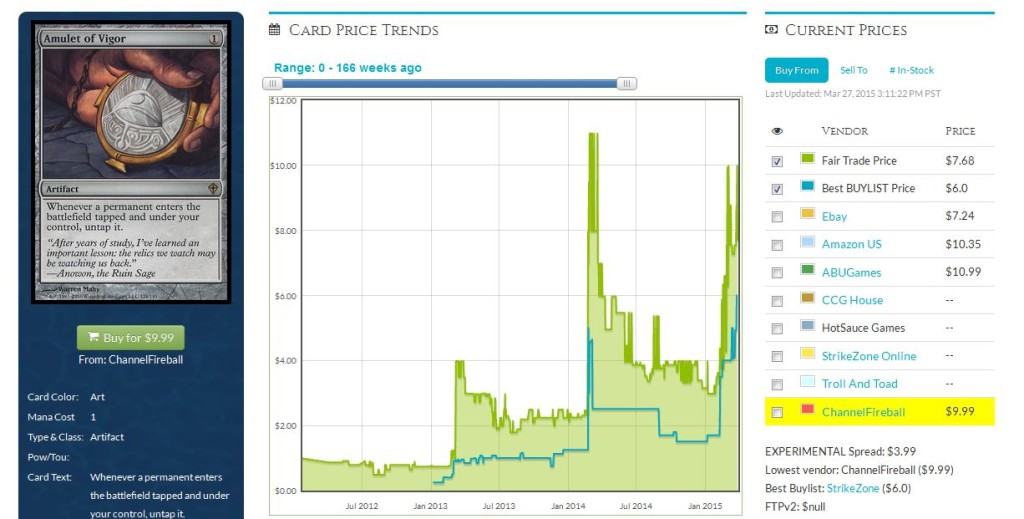
I often hear about how difficult it is for even the most adept hedge fund managers to beat the S&P 500 on a consistent basis. If only they heard about MTG Finance!
The reason I bring up this risk continuum is because I share where my strategy lies, for context. Generally I am a risk-averse person. I also have a lingering fear of MTG Finance in general – the secondary Magic Card market is easily manipulated and unregulated, controlled only by Hasbro’s whim. Therefore I make a point not to overextend my exposure to MTG. Everyone has their financial flexibility and limitations, and I’m comfortable with my allocation to investments in this game.
Additionally, I strive to keep my goal in focus. If I truly hope to put a dent in my son’s college education costs 15 years from now, I can’t go around taking dramatic risk. The reward potential may be large, but losing significant money in this game could set me back years. Therefore, I focus on a strategy of diversification. I try my best to allocate capital towards an array of targets, including cards from Vintage, Legacy, Modern, Standard, Commander as well as sealed product. This way if any format were to suddenly drop in popularity or shift dramatically I wouldn’t lose too much at once. It’s a strategy I borrow from Wall Street investing and it has worked well for me thus far.
A New Risk
In the past few years, Wizards of the Coast has dramatically increased their tendency to do something potentially detrimental to MTG collection values everywhere. Know what it is? Here’s a hint:
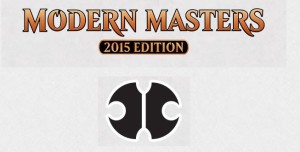
Wizards of the Coast has decided to tap into the powerful secondary market by creating more and more products with reprints. Can you really blame them? Duel Decks, Event Decks, Commander products, From the Vault series, more and more judge promos, Modern Masters, and all these old set rehashes (e.g. Return to Ravnica, Scars of Mirrodin, and Battle for Zendikar) – every single one has given Wizards of the Coast an opportunity to increase sales by bringing back strategic valuable cards from old sets. And while the reprint is nothing new, their frequency is surely alarming to a conservative speculator such as me.
How do I manage this new risk? Besides diversification, I’m a strong believer that certain cards are more prone to reprint risk than others. My strategy is to identify the lower risk cards which see plenty of play and move in accordingly. This goes beyond sticking with newer cards cleared from MM2015 such as Snapcaster Mage, mind you. While Snapcaster was a terrific buy a couple months ago, I think there are some other less obvious pickups which should be relatively safe from reprinting.
I should point out that not everyone agrees with this sentiment. A recent Twitter conversation was the first time I recognized the dissonance in community opinion.

I have complete respect for Nick, but my opinion was not influenced by Twitter debate. Since I have more than 140 characters to work with, I’m hoping I can share my perspective here.
Let’s start with a premise: Wizards of the Coast does not want Modern Masters 2015 to be too much like Modern Masters. If there’s mostly overlap between sets, the new product won’t have a new “feel” to it. Players wouldn’t like this. Additionally, the new Modern Masters 2015 set will have a broader menu of sets to include reprints from. The first MMA set contained cards ranging from Eighth Edition through Alara Reborn. Yet MM2015 will contain cards all the way up through and including New Phyrexia. The larger pool of cards dictates most the MMA cards cannot reappear in MM2015.
“But but…what about Tarmogoyf? We already know he’s back again!”

While true, let’s look at this with a little pragmatism here. Tarmogoyf continues to be the most expensive card in Modern despite getting the reprint treatment in the first Modern Masters. In fact, the value of the Green creature went UP upon reprinting. This means two things for WOTC. First, they have license to reprint this card again knowing another printing at Mythic Rare won’t absolutely destroy Tarmogoyf’s market value. And second, they would be crazy not to include him in the new Modern Mastsers set. That card alone is going to sell the set. Suddenly paying $9.99 for a pack is less worrisome when you know you can open up $200 in a single card.
So while there will likely be a few other strategic reappearances, I still think this set will be designed to have a different “feel”. New mechanics will appear (e.g. annihilator, metalcraft) and Wizards will need to print sufficient cards to support those strategies in draft. There are also a good deal of valuable cards in the newer sets of MM2015, and these cannot be ignored.
With all this said, I stand by my tweets above: some cards are less risky than others.
For example, Pact of Negation, Slaughter Pact, and Summoners’ Pact got the reprint treatment in MMA. I don’t anticipate they’ll show up again. That would be three repeat slots taken up, and I just don’t think they’ll come back. There were also only fifteen Mythic Rares in MMA. We already know Goyf is coming back as one for MM2015. How many repeat Mythics will show up? With a bunch of Eldrazi, Mox Opal, and a few other expensive, newer cards to reprint I can’t imagine we see too much overlap in the Mythic Rare department. Vedalken Shackles still hasn’t recovered fully from its reprinting and is unlikely to come back. Or how about the two swords we got in MMA? Wouldn’t it make more sense to see two of the newer swords in MM2015, such as Sword of War and Peace and Sword of Feast and Famine?
And forget the Dragon Spirit cycle – that’s five relatively cheap Mythic Rares no one wants to open in a $10 pack.
Net, I don’t only believe some cards are more reprintable than others. I believe we can strategically mitigate risk to our portfolios by anticipating which cards are unlikely to show up for a second go around. I doubt I’ll predict things perfectly, but if I can use any information available to me to avoid taking unnecessary losses on cards, you’d better believe I’m going to do so. Often times, that’s what the name of the game is – using information available to us as best as we can to try and create an edge.
It’s that edge that leads to sustainable, consistent profits. It also adds discipline to our approach, ensuring we think through our investment decisions before committing funds. And in a world of rampant buy-outs and needless hype, strategic thinking is even more critical in order to avoid pitfalls of baseless speculation.
Wrapping It Up
Hopefully my introductory article here on MTGPrice covered the backdrop for how I approach MTG Finance, while also hinting at some worthwhile targets in trade. Something like Pact of Negation is unfortunately already $20+, but it’s also the only played free Counterspell in Modern. It also sees occasional Legacy play, which makes the card even more attractive for the long run. And with its appearance in the first Modern Masters, you could do worse than to trade into a few copies if you’re looking for slow, stable upside.
Other safer targets include Engineered Explosives (my number one Tiny Leaders target), Glen Elendra Archmage, and Lotus Bloom.
In the future I hope to look beyond Modern and share some of my favorite targets in other formats, along with how I’m currently allocating my funds toward each format. I’ll explain why I think Dual Lands have pulled back significantly over the past few months, and why I see that trend reversing very soon. I’ll share the economic theory behind rising prices in the Vintage market. And I’ll share my misadventures in the sealed product space.
With so much to discuss, along with a backdrop of an ever-changing environment of buyouts and new sets, I hope to be writing for MTGPrice for years to come. I look forward to each and every week.
…
Sig’s Quick Hits
Each week, in addition to my actual article, I like to share three interesting tidbits worth noting based on Star City Games’ stock. The information is shared in rapid fire fashion, and the reader is left to interpret the implications and act in the way they deem best. I hope to continue this practice here at MTGPrice.com, and I’d appreciate comments from readers as to whether or not this section is well-received.
- As long as Affinity remains popular in Modern, Stony Silence will be a worthwhile card to acquire. And with the likely inclusion of metalcraft in MM2015, perhaps the interest in this archetype will increase even further. Star City Games currently has just 3 copies in stock, with a price tag of $4.45.
- Why do I think at least some Dual Lands have finally bottomed? Well Volcanic Island’s stock at Star City Games has continued to dwindle. They now have just 13 total Revised copies in stock, with NM copies listed at $299.99. After dominating the Dual Land world for decades, Underground Sea may finally lose its status as “most expensive Dual Land”. It too retails for $299.99 but SCG has 45 total copies in stock, although none are NM.
- Foil Command Towers are still tough to come by. Star City Games is still only charging $29.99 for both Commander’s Arsenal and judge promo copies. Though, it’s worth mentioning they are sold out of each. I suspect they increase their prices when they restock.

